Marine fittings are the unsung heroes of ship engineering in the Philippines, silently ensuring the smooth operation and safety of vessels navigating vast oceans. From the massive engines that power these behemoths to the intricate plumbing systems that supply fresh water, marine fittings play a critical role in maintaining order in the Philippine Sea. Whether it’s securing heavy cargo with sturdy lashing points or channeling electricity through watertight connectors, these unassuming components are essential for a ship’s functionality. In this article, we will delve into the fascinating world of marine fittings and explore their various types, functions, and importance in ship engineering. Join us as we unlock the secrets behind these vital elements that keep ships sailing smoothly on their nautical journeys.
Click here to view our general marine fittings capabilities during ship repairs and shipbuilding in Tanza, Cavite.
The Importance of Marine Fittings in Ship Engineering in the Philippines
Marine fittings are the unsung heroes of ship engineering in the Philippines. These essential components play a crucial role in ensuring the safe and efficient operation of maritime vessels. From valves and pumps to couplings and connectors, marine fittings for Philippine vessels enable seamless communication between different systems within a ship, enhancing its overall functionality.
One key aspect of marine fittings is their ability to withstand extreme conditions at sea. The harsh environment of oceans, including high pressure, corrosive saltwater, and fluctuating temperatures, puts immense stress on these fittings. Thus, it is paramount for ship engineers in the Philippines to choose durable materials that can resist corrosion and prevent leaks, even under challenging circumstances.
Moreover, marine fittings contribute significantly to the safety of both crew members and cargo onboard ships. By meticulously installing fire-fighting systems and sprinklers using appropriate marine fittings, engineers ensure protection against potential hazards on sea voyages. Additionally, expertly designed pipe connections supported by reliable couplings ensure efficient fuel transfer processes while minimizing spillage risks.
Marine fittings may often go unnoticed by the general public when admiring majestic ships sailing through Philippine waters. However, these small yet vital components embody the essence of ship engineering excellence by enabling seamless operations under demanding conditions while upholding safety standards with ongoing advancements in technology and materials used for marine fittings construction.

Types of marine fittings in a Vessel: Piping Systems, Valves, and Pumps
In the intricate world of Philippine ship engineering, marine fittings play a crucial role in ensuring the smooth operation and safety of vessels. Piping systems, valves, and pumps are three essential types of marine fittings that work together harmoniously.
Piping systems act as the bloodstream of a vessel, carrying vital fluids such as water, fuel, and oil to various areas. These systems are carefully designed and installed with different materials, such as steel or copper alloys, to withstand the harsh conditions at sea. They are responsible for delivering water for firefighting purposes or cooling down various machinery on board.
Meanwhile, valves serve as the gatekeepers of these piping systems. Valves regulate the flow rate or completely shut off the fluid supply when necessary by opening and closing mechanisms. Their ability to control pressure and flow helps maintain an efficient working environment while preventing leaks or accidents.
Lastly, pumps form another integral part of marine fittings by generating pressure to move fluids within a closed system. Different types of pumps are used based on specific requirements; centrifugal pumps excel in transferring large volumes quickly, while positive displacement pumps excel in moving viscous fluids efficiently.
Understanding these intricate components and their functions allows us to appreciate how every piece plays its role in keeping a vessel operating smoothly at sea. From piping systems acting as arteries carrying vital fluids to valves controlling their flow rate and pumps propelling them forward – it truly is an intricate dance that ensures maritime safety and efficiency.
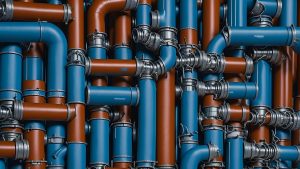
Piping Systems: Type of Marine Fittings in a Vessel
When it comes to the intricate web of piping systems in a Filipino-owned ship, marine fittings play a crucial role in maintaining the functionality and safety of the vessel. From simple valves to complex flanges, these fittings are responsible for controlling the flow and pressure of various liquids and gases on board.
One of the most common types of marine fittings is the valve, which regulates fluid flow by opening or closing a passageway. There are different types of valves used in ships, including gate valves, globe valves, ball valves, and butterfly valves. Each valve has its own unique design and purpose, ensuring proper fluid control depending on the specific application.
Another essential type of marine fitting is the flange. Flanges are used to join pipes together or connect pipes to other equipment, such as pumps or tanks. They provide a secure connection that can withstand high pressures and prevent leaks. Flanges come in various designs, including slip-on flanges, weld-neck flanges, and socket weld flanges.
Overall, understanding the different types of marine fittings is vital for ship engineers as they navigate through complex piping systems. These fittings not only ensure smooth operation but also contribute to overall safety on board by preventing leaks and controlling fluid flow effectively.
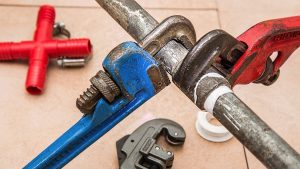
Repairing Piping Systems of Ship’s Marine Fittings: How does it work?
Repairing piping systems of a ship’s marine fittings can be a complex process that requires careful planning and execution. These systems are essential for the proper functioning of a ship, as they transport water, fuel, and other fluids necessary for various onboard operations. When a pipe in the system gets damaged or starts leaking, it can pose significant risks to the safety and efficiency of the vessel.
To repair a piping system on a ship’s marine fitting, several steps need to be followed diligently. The first step is identifying the location and extent of the damage through thorough inspection and testing. Once identified, the damaged section of the pipe needs to be isolated and drained to ensure no fluid leakage during repairs. Depending on the severity of the damage, different techniques, such as patching or welding, may be employed to fix leaks or replace compromised sections of piping.
One crucial aspect of repairing piping systems on ships is ensuring that all repairs adhere to relevant safety standards and regulations set by maritime authorities. This includes using approved materials for repairs, following proper welding procedures if necessary, and conducting thorough tests before putting the repaired system back into operation. It is essential that these repairs are done by experienced maritime engineers who have an in-depth understanding of how these systems function on ships and are trained in carrying out repairs safely at sea.
Repairing piping systems on a ship’s marine fittings is not only about fixing mechanical issues but also about maintaining safety standards in a challenging maritime environment.
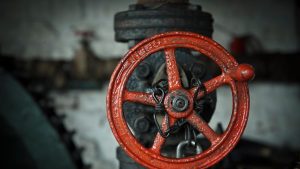
Valves and Pumps: Type of Marine Fittings in a Ship
Valves and pumps are vital marine fittings that play a crucial role in the operation of a ship. Valves are used to control the flow of fluids, such as water, fuel, and oil, throughout the vessel. These fittings come in various types, including gate valves, globe valves, ball valves, and butterfly valves. Each type has its own unique features that make it suitable for specific applications on board.
Similarly, pumps are essential for maintaining fluid circulation and pressure within a ship’s systems. They are responsible for moving liquids from one location to another. Centrifugal pumps, reciprocating pumps, and gear pumps are commonly found on ships due to their efficiency and reliability in handling different types of fluids.
The proper selection and installation of valves and pumps is crucial in ensuring smooth operations onboard a ship. Engineers must carefully consider factors such as system requirements, pressure ratings, materials compatibility, and maintenance requirements when choosing these fittings.
Furthermore, regular maintenance is necessary to ensure the longevity of these marine fittings. Routine inspections can help detect potential issues early on before they become major problems that could disrupt the ship’s functionality.
Valves and pumps form an integral part of marine fittings in ships. Understanding their types and functionalities is critical for ship engineers as they strive to keep maritime operations running smoothly while ensuring safety at sea.

Repairing Piping Systems of Ship’s Marine Fittings: How does it work?
Repairing piping systems of a ship’s marine fittings is a crucial aspect of maintaining the overall functionality and efficiency of a vessel. These systems are responsible for the transportation of various fluids, such as fuel, water, and even hazardous materials. When a component within the piping system fails or becomes damaged, prompt repair becomes necessary to prevent further complications and ensure uninterrupted operation.
The process of repairing piping systems in a ship’s marine fittings involves several intricate steps that require technical expertise. Firstly, identifying the source of the problem is vital. This can be achieved through careful inspection and assessment conducted by qualified engineers familiar with ship engineering principles. Once the issue has been pinpointed, proper isolation and shutdown procedures come into play to minimize any potential risks during repair activities.
Repairs typically involve replacing or fixing faulty components within the piping system, such as valves, pumps, or even sections of pipework itself. Often this requires specialized tools and equipment tailored for maritime applications due to the unique challenges posed by working on ships at sea. In addition to ensuring that repairs are carried out in compliance with safety regulations and industry standards, factors like corrosion prevention must also be considered for longevity and continued functionality.
Repairing piping systems in a ship’s marine fittings is a complex process that necessitates attention to detail and adherence to stringent safety measures.

Material Selection for Marine Fittings
When it comes to marine fittings, selecting the right materials is of utmost importance. The harsh and corrosive environment of the sea poses unique challenges that require careful consideration. Stainless steel is a popular choice for marine fittings due to its corrosion resistance properties and ability to handle high levels of moisture. However, more advanced options such as titanium are gaining popularity for their exceptional strength-to-weight ratio and resistance to saltwater corrosion.
Another crucial factor in material selection for marine fittings is compatibility with other materials used in the ship’s construction. For example, brass may be selected for its excellent machining properties and aesthetic appeal, but it can cause galvanic corrosion when in contact with aluminum or stainless steel. It is essential to carefully evaluate the combination of materials used in each fitting application to prevent potential issues down the line. Additionally, considering factors like cost-effectiveness, durability, and environmental impact can further inform material selection decisions when it comes to marine fittings.
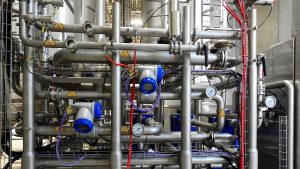
How to Choose the Right Materials for Marine Fittings of a Boat?
Choosing the right materials for marine fittings is crucial for ship engineering. The harsh conditions of the sea require fittings that can withstand corrosion, extreme temperatures, and high pressures. Stainless steel is a popular choice due to its excellent resistance to both corrosion and heat. However, in recent years, titanium has gained popularity as an alternative material for marine fittings. Titanium offers similar corrosion resistance to stainless steel but with the added advantage of being lighter in weight. This can be particularly beneficial for ships looking to decrease overall weight and increase fuel efficiency.
Another important factor to consider when selecting materials for marine fittings is their ability to withstand high pressures. Bronze is often used in marine applications due to its high strength and resistance against erosion and cavitation damage caused by high-speed water flow. Additionally, bronze possesses anti-galling properties which reduce friction between metal surfaces – a useful quality in sliding or rotating applications like propellers and shafts.
In conclusion, choosing the right materials for marine fittings requires careful consideration of factors such as corrosion resistance, heat resistance, weight, strength, and anti-friction properties. While stainless steel has been a trusted choice for many years due to its durability and versatility, titanium offers a lightweight alternative that can provide significant benefits in terms of fuel efficiency. Furthermore, bronze remains an excellent option when considering its high strength and resistance against wear caused by water flow.
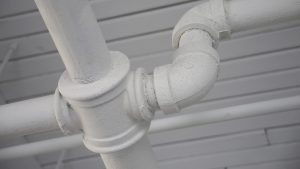
Installation and Maintenance Considerations for Vessel Marine Fittings
When it comes to the installation and maintenance of vessel marine fittings in the Philippines, certain considerations are essential for ship engineers to keep in mind. First and foremost, it is crucial to choose high-quality fittings that are specifically designed for marine applications. These fittings should be made from corrosion-resistant materials such as stainless steel or bronze to withstand the harsh marine environment.
Furthermore, proper installation techniques are paramount in ensuring the longevity and functionality of vessel marine fittings. Ship engineers must carefully follow manufacturer guidelines and specifications when installing these fittings, paying close attention to factors such as torque requirements and proper sealing techniques. Additionally, regular inspections and preventive maintenance should be carried out to identify any potential issues early on and address them before they become major problems.
By selecting high-quality fittings and adhering to proper installation procedures as well as carrying out timely maintenance checks, ship engineers can optimize the performance of vessel marine fittings throughout their service life. This not only ensures the safety and reliability of the vessel but also helps minimize downtime due to unforeseen equipment failures at sea.
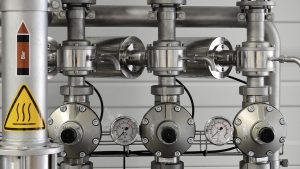
Repairing Marine Fittings: How Engineers Do It?
When it comes to repairing marine fittings, Filipino engineers have to rely on their expertise and knowledge of vessel architecture and mechanics. These fittings play a critical role in the smooth functioning of a vessel, ensuring that everything from propulsion systems to fire-fighting equipment is in proper working condition. Therefore, when a fitting needs repair, engineers need to act swiftly and efficiently.
One of the key challenges that Filipino engineers face during the repair process is identifying the root cause of the problem. This requires a thorough understanding of how each fitting functions within the complex network of systems on board a ship. Engineers utilize various diagnostic techniques, such as visual inspections, pressure testing, and fluid analysis, to pinpoint any issues or malfunctions. Once they have identified the problem area, they can then proceed with repairing or replacing components as necessary.
In addition to technical skills and knowledge, engineers also need excellent problem-solving abilities. Unlike other industries where standardized solutions may exist for common problems, marine fittings often require customized solutions due to varying designs and configurations across different vessels. This calls for creativity and ingenuity from engineers in order to devise effective repairs that will not only solve immediate issues but also prevent further damage or breakdowns down the line.
Repairing marine fittings in the Philippines is not just about fixing broken parts; it’s about ensuring the safety and functionality of vital systems on board ships. It requires skilled individuals who are well-versed in ship engineering principles along with strong analytical and innovative thinking capabilities.

The Role of Ship Engineers in Maintaining Marine Fittings
Ship engineers in the Philippines play a crucial role in maintaining marine fittings, ensuring the smooth operation of a vessel at sea. Beyond their core responsibilities of overseeing the technical aspects of a ship’s machinery, these skilled professionals are also tasked with keeping all marine fittings in optimal condition. From valves and pumps to electrical systems and navigation equipment, ship engineers are responsible for regularly inspecting, repairing, and replacing these key components.
One important aspect of maintaining marine fittings is understanding their intricate connections to other systems on board. Ship engineers must have a comprehensive understanding of how different fittings interact with each other and how they tie into the larger overall functioning of the vessel. By carefully monitoring any changes or malfunctions in marine fittings, ship engineers can proactively address issues before they become more serious problems that could potentially endanger the ship’s crew or compromise its efficiency.
Moreover, Filipino vessel engineers need to stay up-to-date with industry trends and advancements to ensure that they are utilizing the most efficient and effective technologies available for maintaining marine fittings. This involves continuous learning and professional development to be well-versed in new techniques, tools, materials, and safety protocols relevant to maritime engineering. By staying informed about cutting-edge developments within their field, ship engineers can provide valuable insights into optimizing performance while adhering to environmental regulations.
Filipino ship engineers play an integral role in maintaining marine fittings by inspecting them thoroughly for any signs of wear or malfunction and addressing issues promptly.

Innovations in Vessel Marine Fittings Technology
Maritime technology has seen significant advancements in recent years, and nowhere is this more evident than in vessel marine fittings. These crucial components play a vital role in the safe and efficient operation of ships, and new innovations are revolutionizing the industry. One notable development is the use of 3D printing technology to create custom marine fittings with unmatched precision.
Traditionally, shipbuilders would have to rely on expensive molds and time-consuming machining processes to produce complex marine fittings. However, 3D printing allows for the creation of intricate designs using specialized materials that meet stringent safety standards. This not only saves time and money but also enables a level of customization that was previously unheard of.
Another exciting innovation in vessel marine fittings is the integration of smart technology. By embedding sensors into these components, ship engineers can now monitor their performance in real time. This data can then be analyzed to detect any potential issues or failures before they become critical problems.
For example, sensors embedded within pipe fittings can measure factors such as temperature, pressure, and flow rates. With this information readily available onboard ships or remotely accessed from shore-based systems, maintenance teams can proactively schedule repairs or replacements to avoid costly downtime.
The world of vessel marine fittings stands poised at the forefront of technological progress. With advancements like 3D printing and smart technology becoming increasingly prevalent, we can expect safer and more efficient shipping operations as we sail into the future.

Challenges in Designing Marine Fittings in Boats and Vessels in the Philippines
Designing marine fittings for boats and vessels is a complex task that comes with its fair share of challenges. One such challenge is the need for durability and corrosion resistance. Marine fittings in the Philippines are constantly exposed to harsh saltwater environments, which can cause materials to deteriorate quickly. Therefore, designers must carefully select materials that can withstand these conditions and ensure the longevity of the fittings. Additionally, they must consider the forces exerted on the fittings during regular use, such as wave impact or wind pressure, and ensure their designs can handle these stresses without failure.
Another challenge in designing marine fittings is the limited space available on board ships and boats. Vessels often have cramped quarters and tight spaces, making it difficult to install bulky or large-sized fixtures. Filipino designers need to find innovative ways to optimize space utilization while still maintaining functionality and accessibility for crew members. This involves making precise calculations, considering ergonomic factors, and sometimes even customizing fittings to fit specific dimensions.
Furthermore, Filipino designers also need to take into account the unique requirements of different types of vessels. For example, a yacht may require more luxurious and aesthetically pleasing fittings compared to a commercial fishing boat or oil tanker, where practicality takes precedence over appearance. This creates additional challenges in terms of design versatility and flexibility.
Designing marine fittings in boats and vessels requires careful consideration of durability in corrosive conditions, optimization of limited space availability onboard ships, and tailoring designs according to vessel requirements—all while ensuring safety standards are met—not an easy feat by any means!
Are You Looking for the Best Marine Fittings Company in the Philippines?
When it comes to finding the best marine fittings company in the Philippines, look no further than Amaya Dockyard & Marine Services Inc. (ADMSI). With their commitment to cost-effectiveness and quality, they are a cut above the rest. Whether you require fittings for commercial vessels, offshore platforms, or recreational boats, ADMSI has got you covered.
- Email us: info@amayadockyard.com
- Call our 24-hour hotline: +63 917 633 0479
- Viber: +63 917 633 0479
- WhatsApp: +63 917 633 0479
- Facebook Messenger: Click here
- Click here to inquire
What sets them apart from other marine fitting companies in the Philippines is their attention to detail and skilled craftsmanship. They understand the importance of reliable and durable fittings in maritime operations, which is why they go above and beyond to deliver products that meet international standards. Not only that, but partnering with ADMSI also means gaining access to a team of experienced engineers and technicians who can provide expert advice and assistance throughout the process.
From ball valves to pipe fittings to flanges, ADMSI offers a wide range of marine fittings that cater to various needs. Their dedication towards customer satisfaction is evident not only in their exceptional products but also in their efficient after-sales service. By choosing Amaya Dockyard & Marine Services Inc., you can rest assured knowing that your vessel will be equipped with top-of-the-line fittings that exceed your expectations while staying within budget.
When it comes to marine fittings in the Philippines, Amaya Dockyard & Marine Services Inc. stands out as a leading provider of cost-effective and quality ship hardware solutions.

Summing Up: The Crucial Role of Marine Fittings in Ship Engineering
In conclusion, it is evident that marine fittings play a crucial role in ship engineering in Cavite, Manila, Subic Bay, Navotas, Batangas, and Cebu. These fittings are not simply decorative elements or accessories; they serve as vital components that ensure the safety, functionality, and efficiency of marine vessels.
One of the key aspects of marine fittings is their contribution to structural integrity. The installation of robust fittings such as cleats, bollards, and fairleads enhances the ship’s ability to withstand external forces and maintain stability during adverse weather conditions. Without these fittings, ships would be vulnerable to damage and potential accidents at sea.
Furthermore, marine fittings also contribute to the efficient operation of a ship by facilitating essential functions such as anchoring, mooring, and cargo handling. By providing secure attachment points for ropes and lines, fittings like deck-mounted bitts or chocks allow for smooth docking procedures without compromising safety. Additionally, specialized fittings like watertight hatches ensure proper sealing to prevent water ingress into various compartments of the ship.
In essence, marine fittings are an integral part of ship engineering that cannot be overlooked or underestimated. Their contribution to structural integrity and operational efficiency makes them indispensable in ensuring safe and successful voyages at sea.



